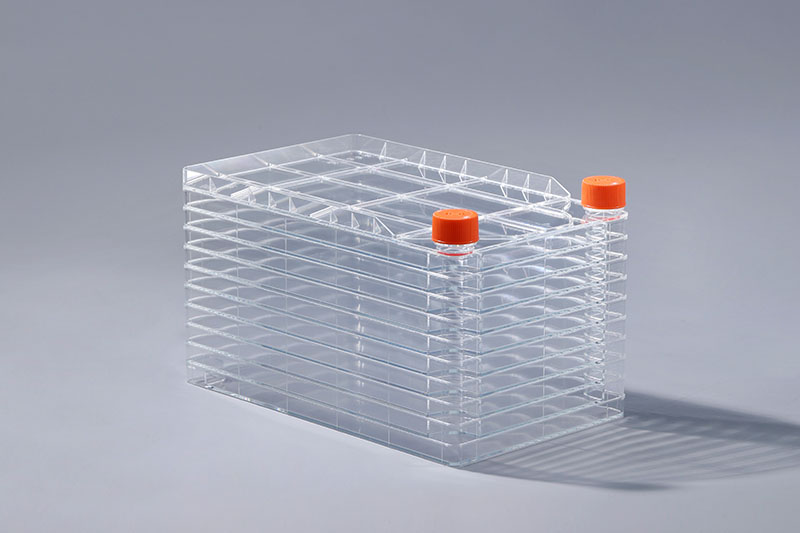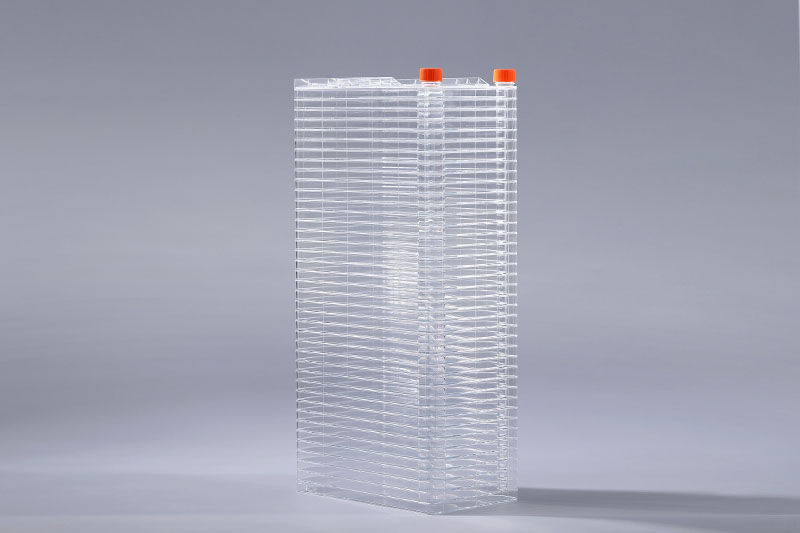As a large-scale culture vessel, cell factories play an important role in the production of products such as human vaccines, animal vaccines, and cell and gene therapy.
In the small test stage of the product, a single cell factory is generally the main product, and a larger-scale cultivation area is required to enter the pilot test and batch production stage. At this time, how to quickly scale up on the basis of ensuring safe, consistent, and pollution-free operations has become a key consideration.
The cell factory is designed with a multi-layer structure, and scale-up can be done by simply increasing its number. When its number increases, it means that the number of openings increases, not only the operation time will be prolonged, but the risk of contamination will also increase. At this time, we can use a simple way to connect individual factories in series to form a closed culture system. The accessories that need to be used include large-mouth gas conversion kits, large-mouth tee kits, large-mouth liquid transfer kits, etc.
Through the series connection, the open operation is changed into a closed operation, which greatly reduces the risk of external pollution. Due to the difference in production processes, racks, automation equipment, etc. may be used when using cell factories for large-scale culture. No matter what your layout is, we can customize the piping system according to your specific needs to reduce Contamination risk, improve production efficiency.
The FAI climbed 5.9 percent year-on-year in the first 11 months of 2018, quickening from the 5.7-percent growth in Jan-Oct, the National Bureau of Statistics (NBS) said Friday in an online statement.
The key indicator of investment, dubbed a major growth driver, hit the bottom in August and has since started to rebound steadily.
In the face of emerging economic challenges home and abroad, China has stepped up efforts to stabilize investment, in particular rolling out measures to motivate private investors and channel funds into infrastructure.
Friday's data showed private investment, accounting for more than 60 percent of the total FAI, expanded by a brisk 8.7 percent.
NBS spokesperson Mao Shengyong said funds into weak economic links registered rapid increases as investment in environmental protection and agriculture jumped 42 percent and 12.5 percent respectively, much faster than the average.
In breakdown, investment in high-tech and equipment manufacturing remained vigorous with 16.1-percent and 11.6-percent increases respectively in the first 11 months. Infrastructure investment gained 3.7 percent, staying flat. Investment in property development rose 9.7 percent, also unchanged.
 English
English




















































